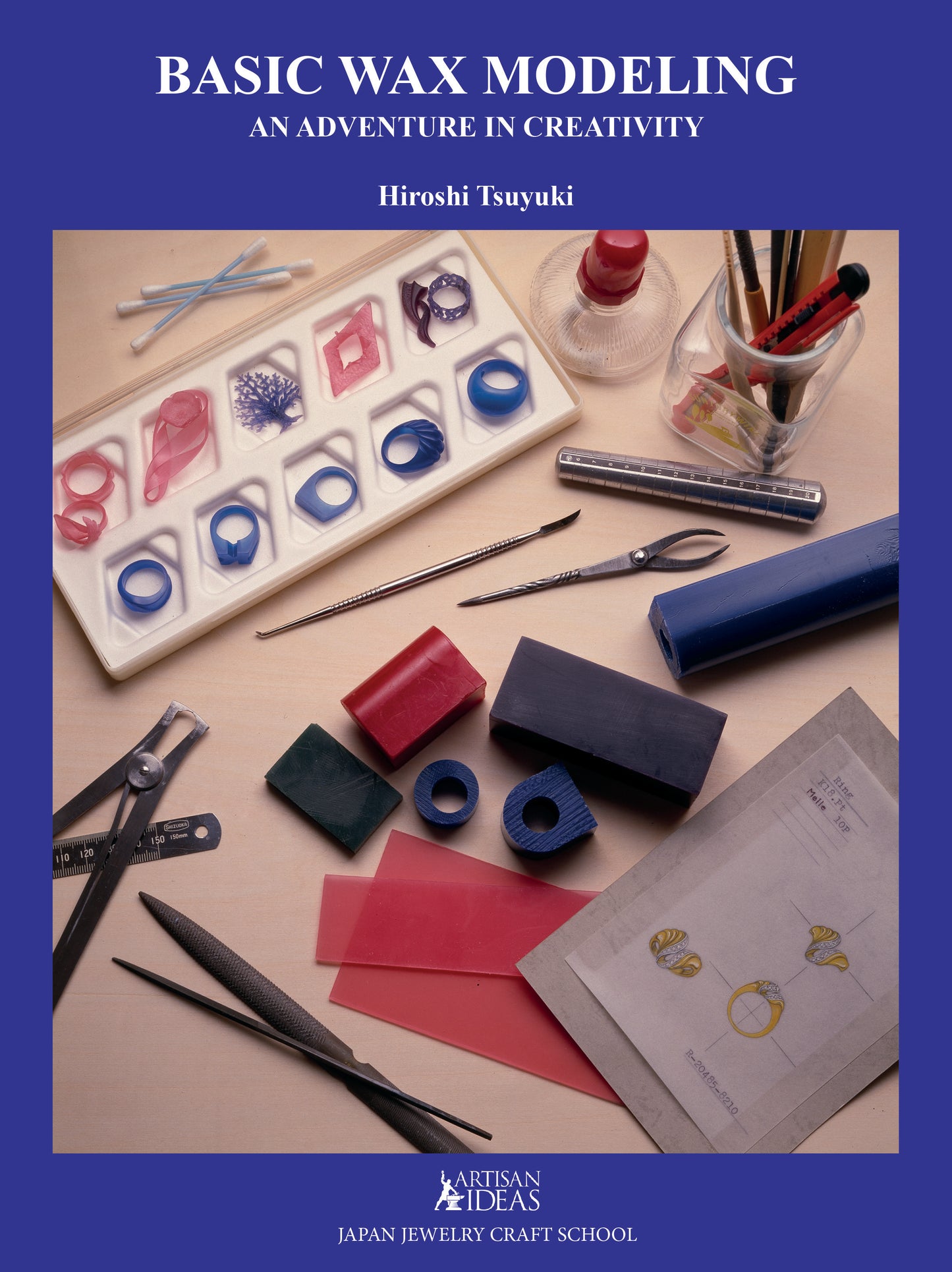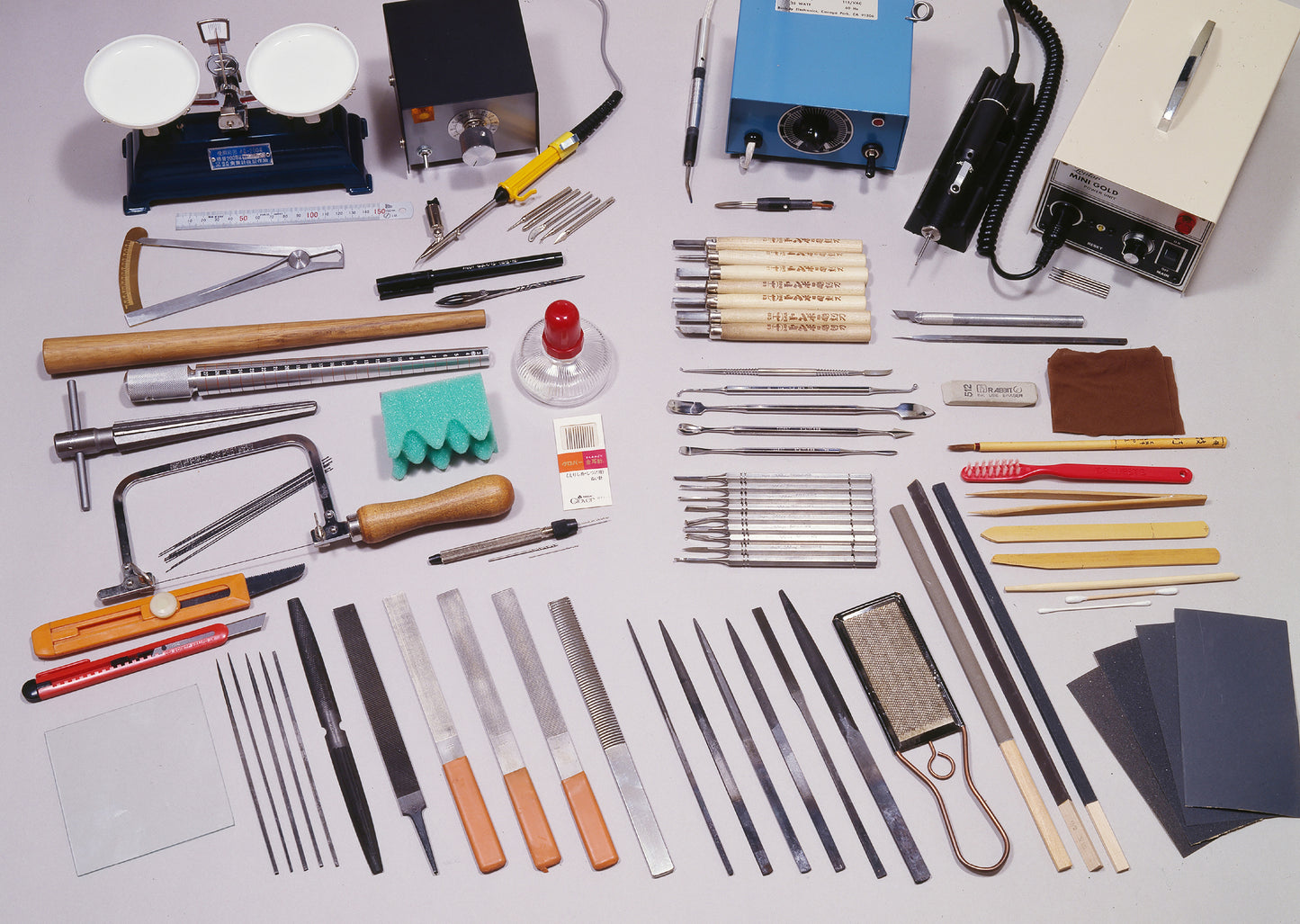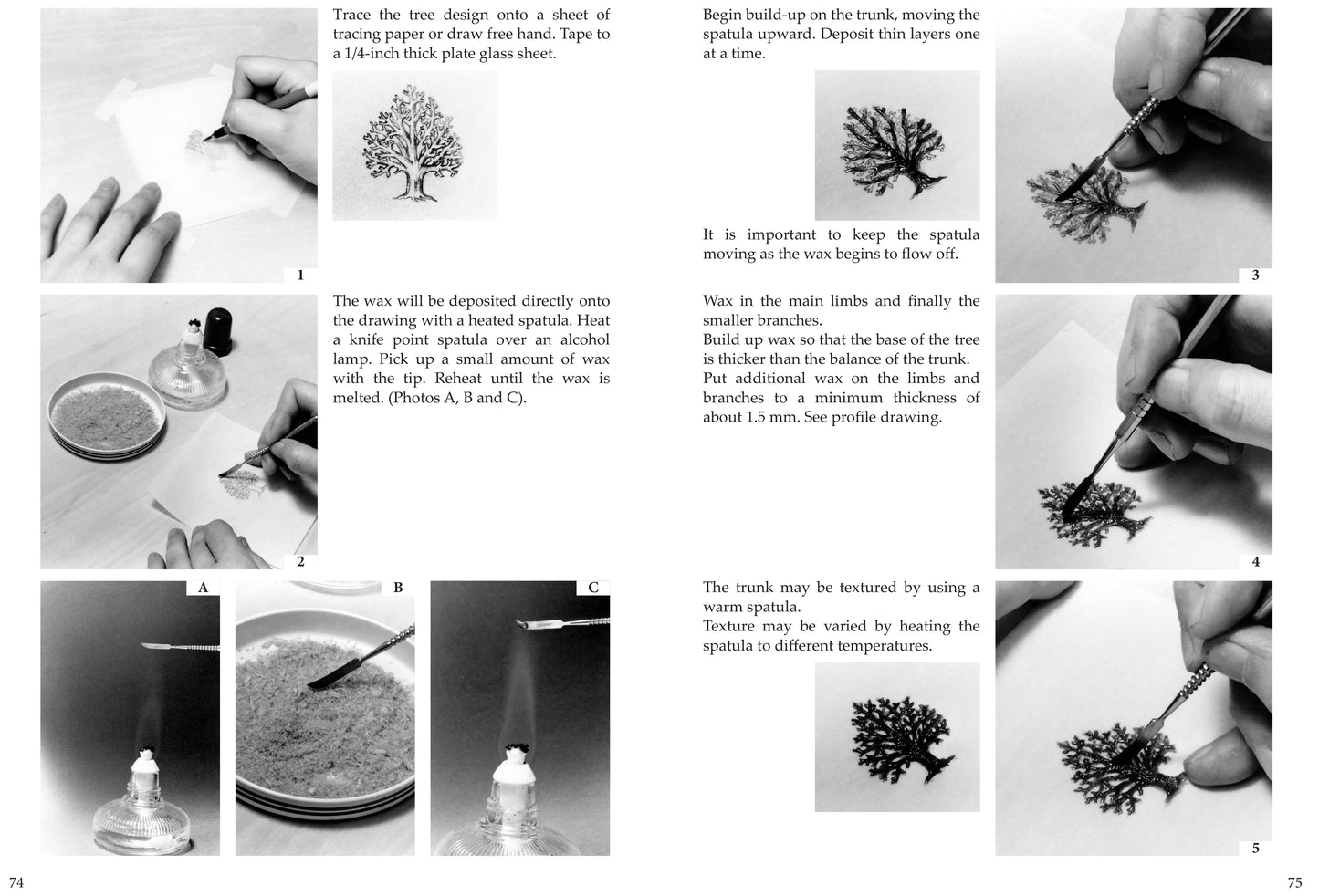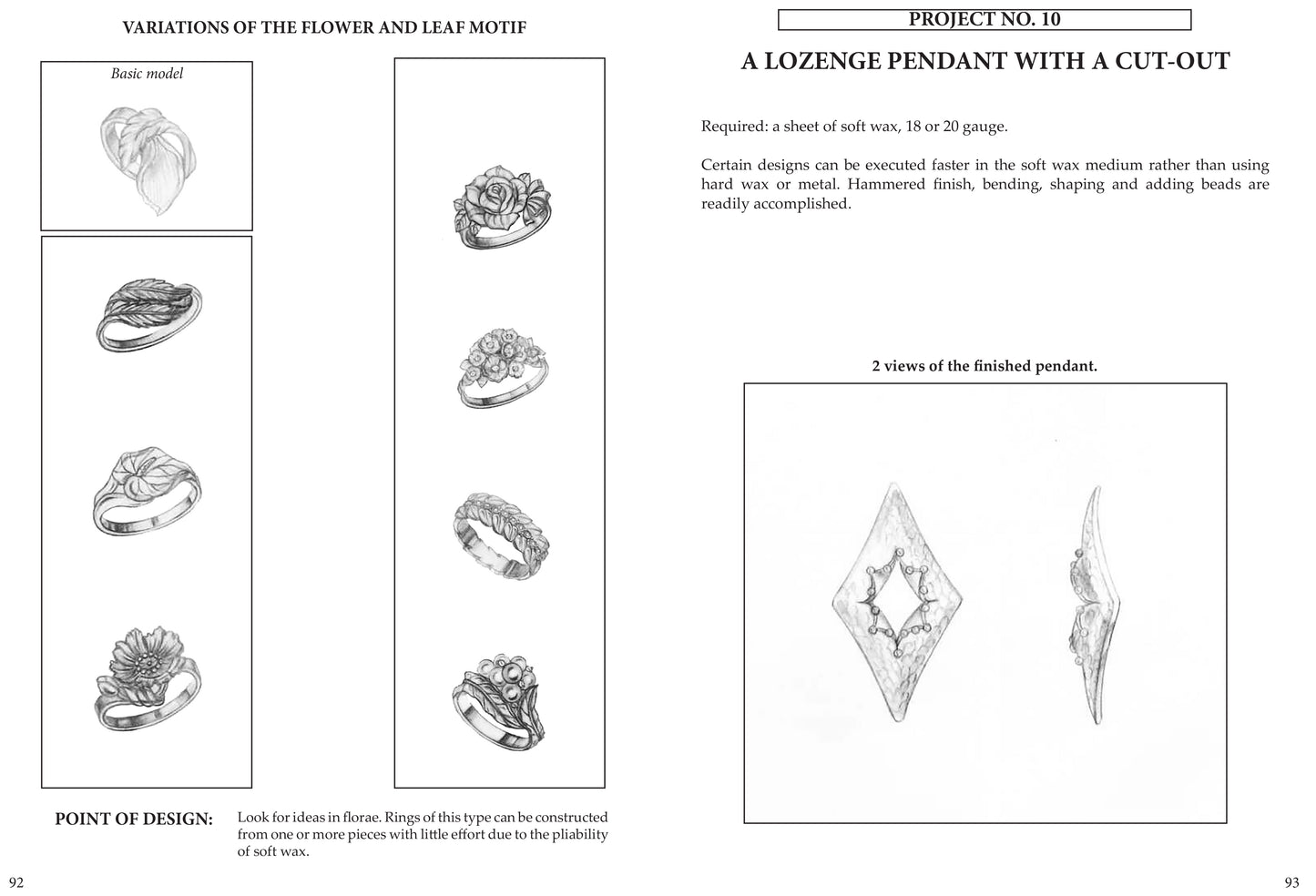Basic Wax Modeling
Basic Wax Modeling
Couldn't load pickup availability
View full details
The author of Basic Wax Modeling, Mr. Hiroshi Tsuyuki, is the Japanese authority on Jewelry Wax Modeling. This is the standard book throughout the world for learning wax modeling for jewelry making. It is used by individuals in home or workshop settings, and also for instruction in schools. In this introductory book Mr. Tsuyuk presents 11 basic projects, each one designed to teach the use of certain tools and types of waxes in a progressive manner as one’s skills improve.
Each step of every project is accompanied by a photo and text and in some cases supplementary sketches and notes are provided to clarify those particular processes. Mr. Tsuyuki states that by conscientiously completing each project, the reader should be well on the way to becoming a designer/modeler.
Hiroshi Tsuyuki's second book, Practical Wax Modeling, co-written with Yoko Ohba, starts off where Basic Wax Modeling leaves off.
List of Projects in Basic Wax Modeling:
• A High Domed Ring
• A Ripple Patterned Ring
• A Signet Ring
• A Box Type Ring
• A Carved Flat Band Ring
• A Textured Pendant with Open Work
• A Wax Build-Up Pendant
• A Wax Build-Up Ring
• A Ring with Flower and Leaf Motif
• A Lozenge Pendant with a Cut-Out
• A Brooch with a Flower and Leaves
Mr. Hiroshi Tsuyuki, is the Japanese authority on Jewelry Wax Modeling.
Review text
"(This book) is an excellent introduction to the art of lost wax casting. Lost wax casting is a common jewelry design technique that was first invented in the 8th century. This edition is a revision of the 1985 original, and is written in clear, precise English in collaboration with The Japan Jewelry Craft School.
Tsuyuki discusses the 14 different kinds of wax (15 if you count sticky wax) and their uses. Tools and basic techniques are thoroughly covered and tools used in each project are even shown in the text as they are used in the photos so there is no confusion as to which tool should be used
Eleven projects are illustrated with clear, step-by-step photographs and precise explanations. Variations of each project are suggested at the end of each chapter.
There are five charts in the Appendix: Ring Sizes, Plate and Wire Gauge Comparisons, Weight Chart, Millimeter/Inch Conversion, and Diamond Carat/Diameter Table.
My husband taught art for over 40 years, including jewelry at the high school and junior college levels, and was impressed with these charts as well as the book overall. He said he wished he'd had such a book available for his students.
Though I myself am not an artist, I could easily follow the directions and am confident that I could use the book to create basic jewelry. We both highly recommend this text as a guide to lost wax casting. The formatting, design, and presentation are well done. The text and photos are clear and precise. Kudos to the author, editor(s), and publisher for creating an excellent art instruction book."







